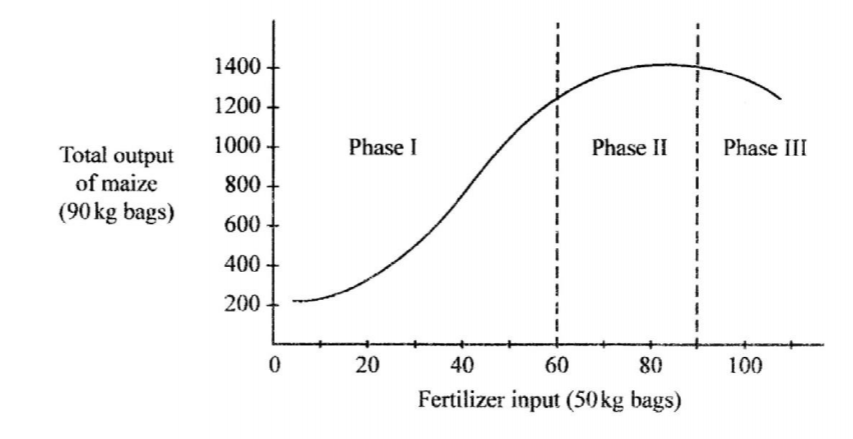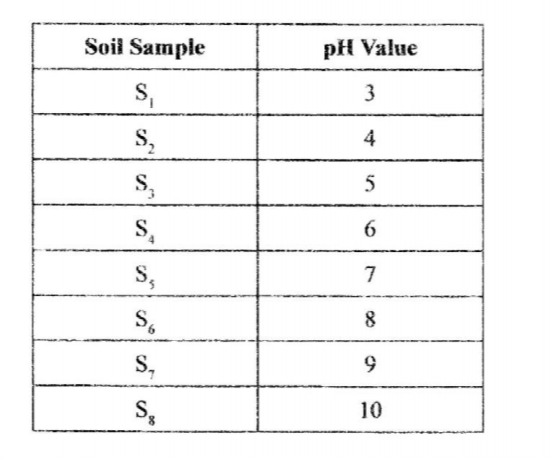
Kenya certificate of Secondary Education
2016 Agriculture Paper 1
SECTION A
(30 marks) Answer all the questions in this section in the spaces provided.
1. List four factors that would determine the stage at which a crop is harvested. (2 marks)
2. State two ways in which crop rotation controls weeds. (1 mark)
3. Give two factors which characterize small scale farming. (1 mark)
4. Give two examples for each of the following categories of water pipes.
(a) Metal pipes (I mark)
(b) Hose pipes (1 mark)
5. State the information included in a sales receipt when a farmer is selling eggs. (2½ marks)
6. State four characteristics of a good vegetable seedling. (2 marks)
7. Name three forms of horticulture practiced in Kenya. (1 ½ marks)
8. State two mechanical methods of separate line soil particles according to size, during soil analysis. ( I mark)
9. List four disadvantages of mono cropping in crop production. (2 marks)
10. State two reasons for practicing agro forestry on a
(a) river-bank (1 mark)
(b) steep slope (1 mark)
11. Give three reasons for growing crops under optimun temperature conditions. (1 ½ marks)
12. State four reasons for treating water for use on a farm. (2 marks)
13. Outline two w-ays of controlling damping off disease on vegetable seedlings in a nursery. (1 mark)
14. State four factors that affect the quality of farm-yard manure. (2 marks)
15. Distinguish between grading and standardization in agricultural marketing. (2 marks)
16. Give four disadvantages of broadcasting as a method of planting. (2 marks)
17. State three practices which encourage soil erosion. ( I ½ marks) 18. Name two types of noncompetitive markets. (1 mark)
SECTION B (20 marks)
Answer all questions in this section in the spaces provided 19.
The diagram below shows crop establishment using a certain method of planting.
Study it carefully and then answer the questions that follow.

(a) Name the method of planting used for the crop. (1 mark)
(b) State two advantages of the planting method used for the crop. (2 marks)
(c) State two factors that determine the depth of planting,. (2 marks)
20. The diagram below illustrates a feature observed after digging the soil several meters deep. Study the diagram carefully and answer the questions that follow.

(a) Identify the feature that the diagram above represents in the study of soil. (I mark)
(b) Name the parts of the diagram labeled A, B and C. (1½ marks)
A
B
C
(c) State two ways in which the knowledge of the above feature would be of benefit to a farmer. (2 marks)
21. Below is a graphical representation of a law in agricultural economics. Study the graph carefully and answer the questions that follow:

(a) Identify the law illustrated by the graph. (1/2 mark)
(b) Explain how each additional unit of fertilizer input relates to the total output of maize in phases 11 and HI. Phase II (1 mark) Phase III (1 mark)
(c) State the importance of the law identified in (i) above to the maize farmer. (1 mark)
22. The following is a list of plant nutrients; copper, calcium, nitrogen, molybdenum, zinc, phosphorous, carbon, sulphur, iron and magnesium. Which of the above plant nutrients are: (a) Macro-nutrients ( I mark)
(b) Micro-nutrients (1 mark)
(c) Fertilizer elements (1 mark)
(d) Liming elements (1 mark)
23. The table below shows pH value of different soil samples. Study it and answer the questions that follow.
(a) Which soil sample has the highest acidity? (1 mark)
(b) State two ways in which the pH value of sample S, can be lowered. (1 mark)
(c) Which of the above soil samples is suitable for growing tea? ( I mark)
SECTION C (40 marks)
Answer am two questions from this section in the space provided after question 26.
24. (a) Outline the information contained in a purchase order. (5 marks)
(b) Describe the harvesting of tea. (6 marks)
(c) Explain the importance of irrigation in crop production. (5 marks)
(d) Describe the role of magnesium in crop production. (4 marks)
25.(a) Describe the effects of pests on maize in the field. (6 marks)
(b) (i) Describe the procedure of harvesting pyrethrum. (4 marks)
(ii) Explain the precautions that should be observed during the harvesting of pyrethrum. (3 marks)
(c) Describe the cultural methods of controlling soil erosion. (7 marks)
26. (a) Explain eight cultural methods of soil and water conservation. (8 marks)
(b) Explain four ways in which: (i) HIV/AIDS limits agricultural production. (4 marks)
(ii) Government policy improves agricultural production. (4 marks)
(iii) I .ow level of education and technology influence agriculture. (4 marks)